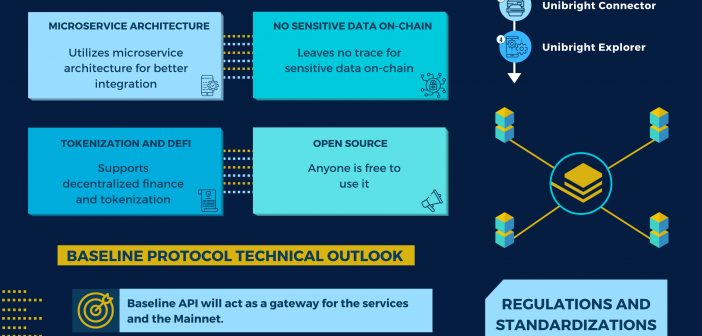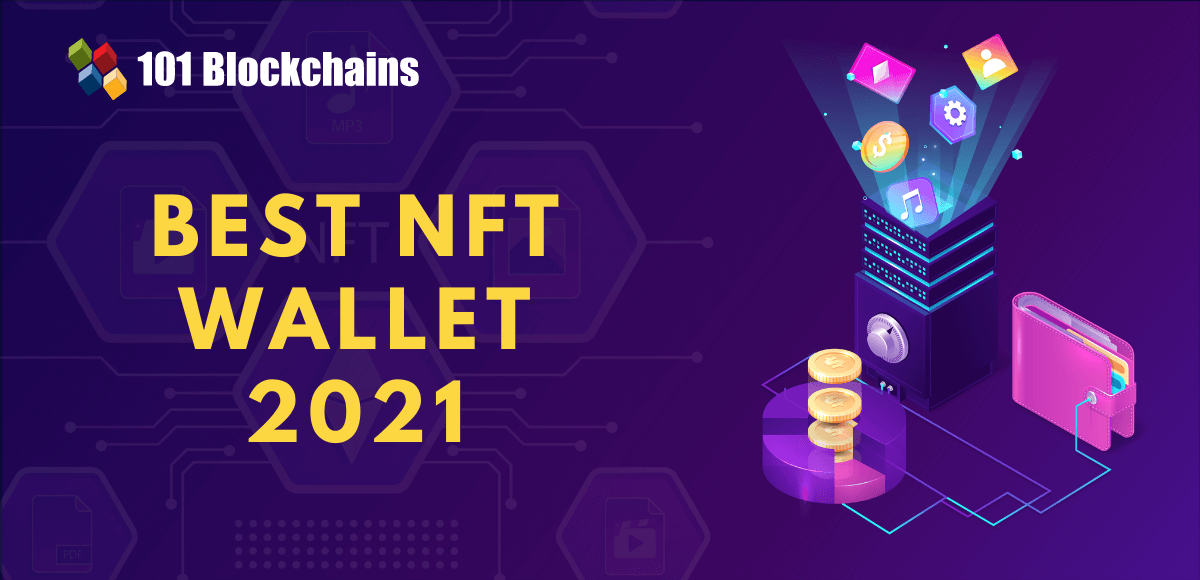Learn how blockchain truly works, master key definitions, and uncover what makes smart contracts so "smart." Dive into the fundamentals, gain valuable insights, and start your blockchain journey today!

- Reviews
101 Blockchains
- on March 23, 2020
Baseline Protocol: Open-Source and Enterprise-Ready
If you are looking to learn about the baseline protocol, then you have come to the right place.
The blockchain industry is evolving at a rapid pace. There is always a need for better technology or a better way to do things. That’s why we now have the “Baseline Protocol.”
In this article, we will learn about it to understand what it has to offer.
What is the Baseline Protocol?
EY is one of the frontiers when it comes to blockchain technology evolution. They along with Microsoft and ConsenSys on 4th March 2020, announced Baseline Protocol. It is a public domain blockchain tool with which the enterprises and deploy and build business process security. It can also be used to create procurement processes and has the option of doing that privately. All of these can be done on the public Ethereum blockchain.
Currently, Baseline protocol is being developed by EY in co-operation with Microsoft and ConsenSys.
The first notable thing about Baseline protocol is that it is open source. This means that it is free to use and offers businesses a low-cost adoption. The technology combines the best advancement in the field of blockchain, messaging, and cryptography. All of these are done via the public Ethereum Mainnet.
Unibright and their role
Another player that is playing a key role in the Baseline Protocol includes Unibright. Its role is to give businesses the ability to connect their traditional systems via the Ethereum Mainnet.
They will provide the Unibright framework. The framework will be “baseline ready,” which means that it is fully compatible with Baseline protocol. It will give the enterprise the toolset required to create and establish a complete business lifecycle.
They provide the following
- Unibright Workflow Designer
- Unibright Lifecycle Manager
- Unibright Connector
- Unibright Explorer
What does that mean? It will support visual smart contract, generation, modeling, monitoring, and connection of the baselined processes.
In simple terms, the protocol will enable complex and confidential collaboration among enterprises. The collaboration will also be done in such a way that there is no sensitive data on-chain can be leaked or leave. To ensure that it matches the standards set by the industry, Ethereum-Oasis Project will govern it. The project is funded by the Enterprise Ethereum Alliance and managed by OASIS.
Also read about Enterprise Blockchains Principles
Unibright will also take care of reviewing and adding specifications and code and work closely with the EEA — The Integration TaskForce.
Learning more about the Baseline Protocol
To get a better understanding, let’s go through the key features that the Baseline has to offer.
Privacy, Permission, and Performance
At the core, the three elements that are most important to any enterprise is permission, privacy, and permission. The Baseline Protocol understands it and provides all three demands using blockchain technology.
This means that enterprises can create a permissioned network and decide who, when, and how they can access the resources on the network. It also does in a privacy-oriented manner, which protects the values of the users. Lastly, performance is taken care of, where the focus is to provide results faster, efficiently, and effectively.
By taking care of all of these, the enterprises can now focus on implementing their businesses, rather than fixing the core aspects of any distributed network.
Ethereum Mainnet as Middleware
Baseline Protocol is going to change how it works with Ethereum Mainnet(public). To make sure that enterprises can work in a more streamlined fashion. In simple words, the Baseline Protocol understands the Ethereum Mainnet as Middleware. However, this doesn’t mean that the key features of the public Ethereum Mainnet are changed. It is still a distributed public ledger where the user needs to pay for their actions via Gas. This simple change can bring a lot of changes in how the enterprise utilizes blockchain technology.
The middleware is unrestricted and easy to use. So, this means that companies can use the protocol to build their product on it. The public network contains local networks(systems of records) such as SAP solutions that can work on their own and then interact with the Mainnet as a common frame of reference. This means that if a business process states are changed, it can connect with the Mainnet and update its status with the public network.
Microservices
Technically, the Baseline protocol follows a microservices-based architecture. This enables different companies to connect with each other using microservices-based architecture. The communication is done using the baseline API. It acts as a default gateway for messaging between different microservices.
No sensitive data on-chain
Another key feature that is offered by the Baseline Protocol is its ability to ensure collaboration and confidentiality among enterprises without the risk of leaving sensitive data. This makes the Baseline Protocol the defacto solution for engaging in the whole ecosystem without the need for worry for enterprises or concerning parties.
Tokenization and DeFi
Out of the box, the Baseline Protocol will support DeFi and tokenization. This gives incentives for enterprises that want to tokenize their business process and its services.
Open Source
Last but not least, the Baseline Protocol is an open-source project. This means that companies or any developer with an interest in the solution can keep it growing and moving it in the right direction.
Technical Outlook – Baseline Protocol
In this section, we will try to get a technical outlook on Baseline Protocol. By now, you should know that it utilizes a microservice architecture. A microservice container of a business process will contain the following.
- Baseline API → The API will act as a gateway for the services and the Mainnet.
- Queuing system → The queuing system will ensure that the services in the container are well orchestrated by offering proper queue management.
- Zero-Knowledge-Proof Service → This is used for generating proofs of private logic consistency and execution.
- Secure message service → It brings the service to provide stateless message transport that is secure.
To make the containers work, all of them are connected to “registrar smart contracts.” They act as a common frame of reference and are located on the Ethereum Mainnet.
Conclusion
This leads us to the end of our Baseline Protocol introduction article. In the future, we will cover it in more detail and provide you in-depth know-how on how to utilize it.





